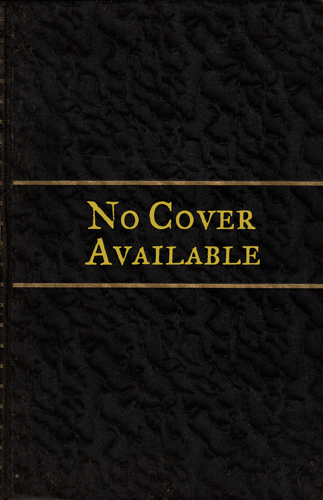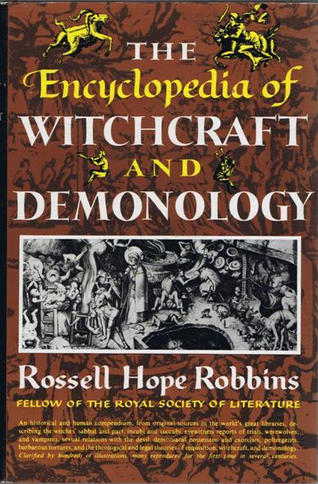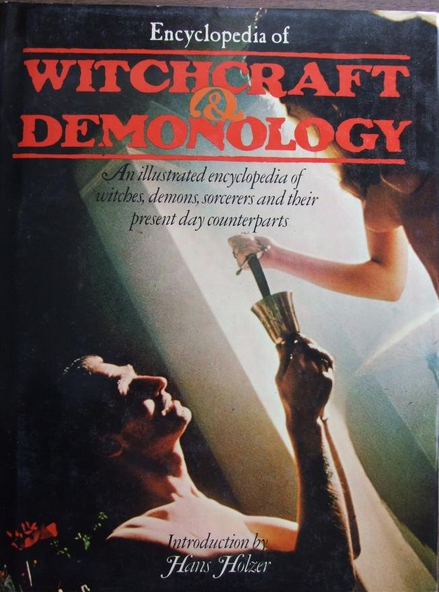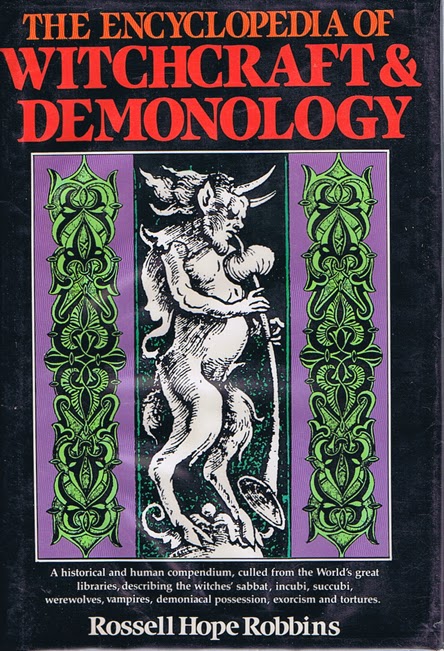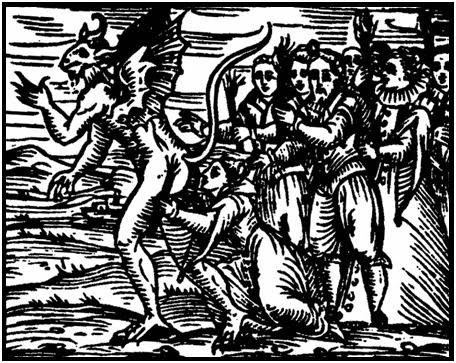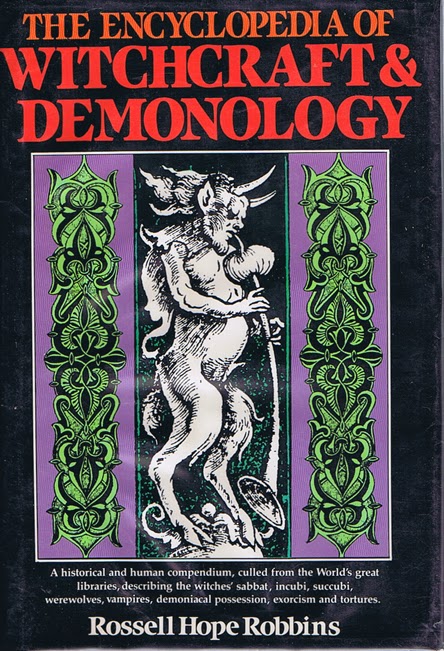
Subtitle: A historical and human compendium, culled from the World’s great libraries, describing the witches’ sabbat, incubi, succubi, werewolves, vampires, demoniacal possession, exorcism and tortures.
Author: Rossell Hope Robbins
Publisher: Crown Publishers, Inc.
City: New York
Year: 1963
Pages:
Binding: Hardback
Size:
This, the most authoritative and comprehensive body of information about witchcraft and demonology ever compiles in a single volume, was written by an outstanding scholar who spent years accumulating material from the great libraries of the world. Here is a full-scale compendium of fact, history and legend about every phase of this fascinating subject from its origins in medieval times to its last eruptions in the eighteenth century. Included are articles about witches’ sabbat and pact, night flight and metamorphosis, incubi and succubi, verbatim report of trials, werewolves and vampires, devils, demoniacal possession and exorcism, poltergeists, the classical demonologists, the Inquisition, how and why witches are accused, barbarous tortures, and accounts of the major witches’ trials of Europe and New England. Accompanying the text are 250 illustrations, many published here for the first time, from rare books, contemporary prints and old manuscripts.
(From the 1981 Bonanza edition:)
First published in 1959, this is still the most authoritative and comprehensive body of information about witchcraft and demonology ever compiled in a single volume. It has been lavishly acclaimed in academic and popular reviews: “This prodigy of scholarship betrays the bloody fingerprint of truth on every page” (London Spectator); “outstripping current crime stories and whodunit fiction for blood curdling, gory details and sheer suspense reading” (Springfield Republican); “a prodigious and brilliant production” (Renaissance News); “the rare encyclopedia that one could read with continuous pleasure… a brilliant job” (Washington, D.C. News). It is listed as the standard reference in the Encyclopedia Britannica.
Here is a full-scale compendium of fact, history and legend about every phase of this fascinating subject from its origins in medieval times to its last eruptions in the eighteenth century. Accompanying the text are 250 illustrations, many published here for the first time, from rare books, contemporary prints and old manuscripts.
(None)
Online Resources
Archive.org | GoodReads | Google Books | LibraryThing
OpenLibrary | Project Gutenberg | Wikipedia | WorldCat
(arranged by year)
(1959 Crown Publishers)
Additional Photos/Images
Misc. Quotes
“One of history’s ironies is the justification of witchcraft on biblical texts, written originally for a religion which had no devil. Catholics and Protestants quoted Exodus xxii. 18, ‘Thou shalt not suffer a witch to live.’ But the Hebrew word kaskagh (occurring twelve times in the Old Testament with various meanings) here means, as Reginald Scot pointed out in 1584, ‘poisoner,’ and certainly had nothing to do with the highly sophisticated Christian conception of a witch. Yet the domination of Holy Scriptures was such that these mistranslations fostered the delusion.” – Bible Witchcraft, page 46
“Every witches’ sabbat was supposed to include a diabolical service, but the ‘black mass’ as such is not found in any contemporary account of witchcraft, and the term became current only at the end of the nineteenth century in connection with Satanism (first used in English in 1896). No matter how titillating, all accounts of black masses (with one exception) must be dismissed as unfounded speculation.” – Black Mass, page 50
“Devil’s marks [stigmata diaboli] or the devil’s seal [sigillum diaboli] occur in nearly all reports of witches or witch trials and illustrate how perverted intelligence and hysterical stupidity could misinterpret natural phenomena and so bring about the murder of thousands of men and women and children.” – Devil’s Mark, page 135
“Unlike witchcraft, a Christian aberration restricted to western Europe, possession and exorcism are universal, common to all religions and beliefs at all times and places.” – Exorcism, page 180
“There was no such thing as Jewish witchcraft. Witchcraft was a blasphemous parody of Christianity with relevance only to Christians.” – Jewish Witchcraft, page 281
“The pact with the Devil was the essence of witchcraft. … Take out the pact, and the witchcraft heresy disappears.” – Pact with the Devil, pages 369-370
“Gilles de Laval, Baron de Rais (1404-40), belongs more to the history of alchemy and magic than witchcraft, for he invoked devils to learn how to make gold. It was charged ‘he adored and sacrificed to spirits, and by their means to have and receive, if he could, knowledge, power, and riches.’ For this, he was executed. His notoriety, however, rests largely on his alleged sexual perversions.” – Rais, Gilles de, page 403
“Theologians and demonologists were puzzled as to how demons, who were spirits, could have relations with humans. The fact itself was accepted, for it had the authority of the Bible and Church behind it.” – Sexual Relations with Devils, page 461
Disclaimer
Due to the obscurity of some titles, the contents of The Compleat Witch Illustrated Bibliography Project may contain information that is inaccurate or incomplete. We encourage readers to submit corrections and pertinent addenda like images, quotes, or other information, either as a Comment on the appropriate post or via The Compleat Witch Illustrated Bibliography Facebook page.
